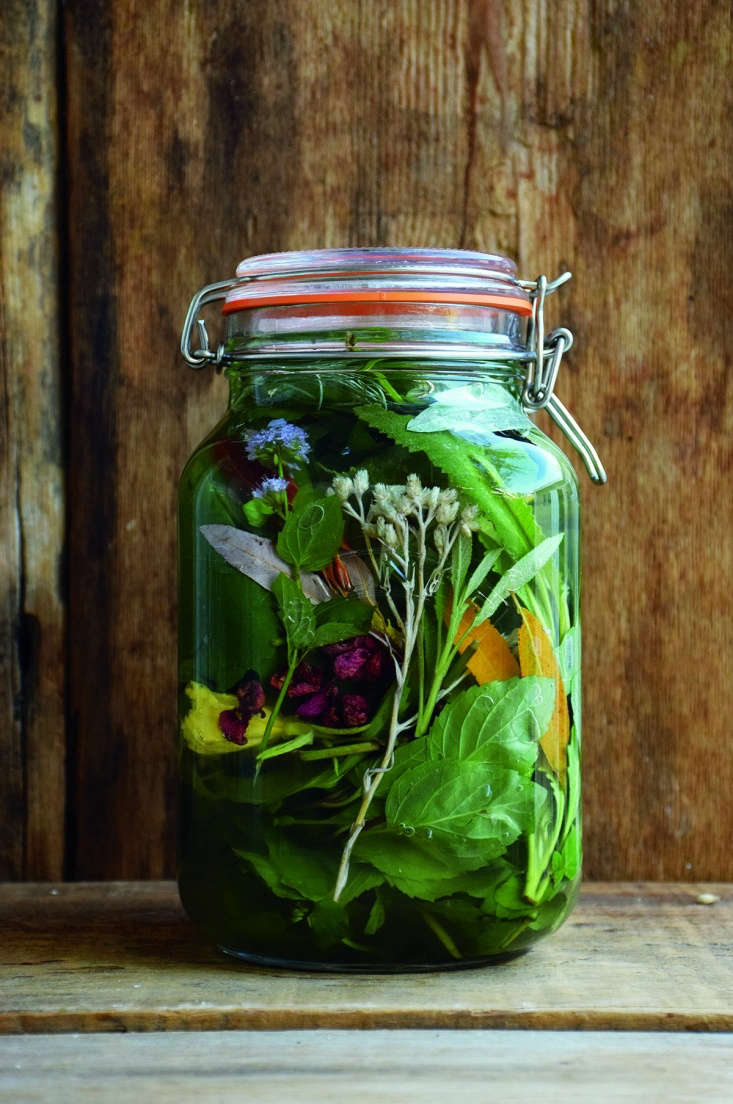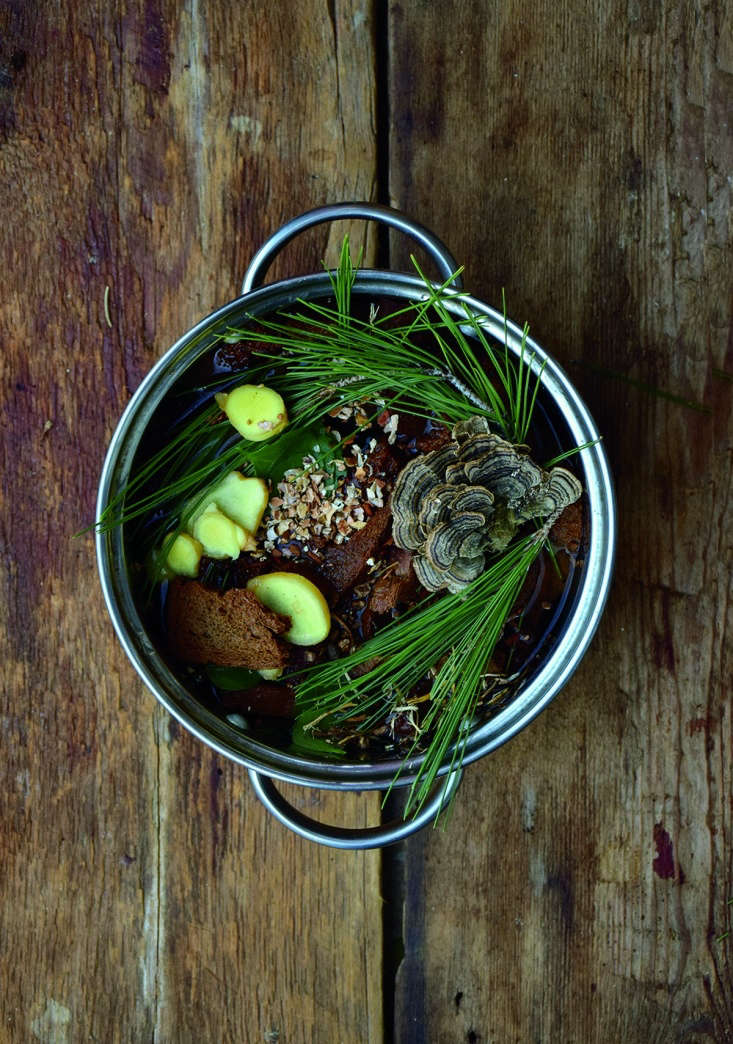Terroir-blazing forager and botanical alchemist Pascal Baudar has written a thirst-quenching new book. The subtitle of The Wildcrafting Brewer sums it up: Creating Unique Drinks and Boozy Concoctions from Nature’s Ingredients. The pages are dedicated to feral, inspired libations and are alive with the spirit of his first book, The New Wildcrafted Cuisine, which introduced readers to the intense pleasures of crafting regional food and drink, by understanding the flavors of local flora.
While “unique” has become a word to throw about casually, Baudar is one of the rare people who fulfills its promise. Drawing on age-old and ethnic traditions, he produces for readers refreshing acts of brewing magic to fill their glasses and equip them with tools to master techniques that will give lifelong pleasure. His gift is to translate his own intense curiosity about botanical flavor (and where to find it) into easily understood methods. Once his brewing bug has bitten you, you will appreciate your local environment in an entirely different way.
Read on for step-by-step instructions for making pine cone soda.
Photography by Pascal Baudar.

Baudar is a mindful gatherer and uses mostly exotic or invasive plants (90 percent by his own estimate). He writes in the introduction that through foraging “you help your native environment by removing non-native plants…and harvesting sustainably or growing the plants you need.” And by planting a brewer’s garden, he explains, you also are doing your local pollinators and birds a favor.
Huzzah! I must cheer. Native edible plants for gardens: This is the beautiful cross-pollination of foraging and growing. Good for biodiversity, good for our palates, and good for native plants that might be vulnerable.


There are syrups—berry, herb, fig leaf and green pine cone—and you can learn to make your own molasses.

Exciting stuff, especially when you realize that you can apply the techniques to your garden, too. Drink your garden, season by season.




Because he lives and forages in southern California, subject to drought and wildfires, Baudar has learned to embrace parts of plants that many of us overlook, or have forgotten about. Some of the best flavors live in bark and seeds.


Pine Cone Soda
1. Place 3/4 cup (150 grams) sugar in a 1/2-gallon (1.89 liter) jar, fill it with spring water, and drop in a couple of unripe pine cones.
2. Screw on the lid, but not too tightly; you want fermentation gases to escape. Three times a day shake the jar for 10 seconds or so. I usually get a fermentation going in from two to three days.
3. Leave the cones inside the jar and continue the ritual of shaking three times a day. When the fermentation is going well, start tasting. Work with it as you go, adding sugar if you want more alcohol. Stop when you like what you have, then strain and pour the liquid into recycled plastic soda bottles or swing-top glass bottles. Check the pressure after a day or so.
When you are satisfied with the level of carbonation, place your brew in the refrigerator and enjoy it the next day. I like to drink it within a week.
Inspired to start foraging locally? See more:
- Forager’s Guide: Are Those Mushrooms Edible?
- Gardening 101: Wild Garlic
- Wedding Flowers: 15 Foraging Ideas for Bouquets and Arrangements













Have a Question or Comment About This Post?
Join the conversation (0)